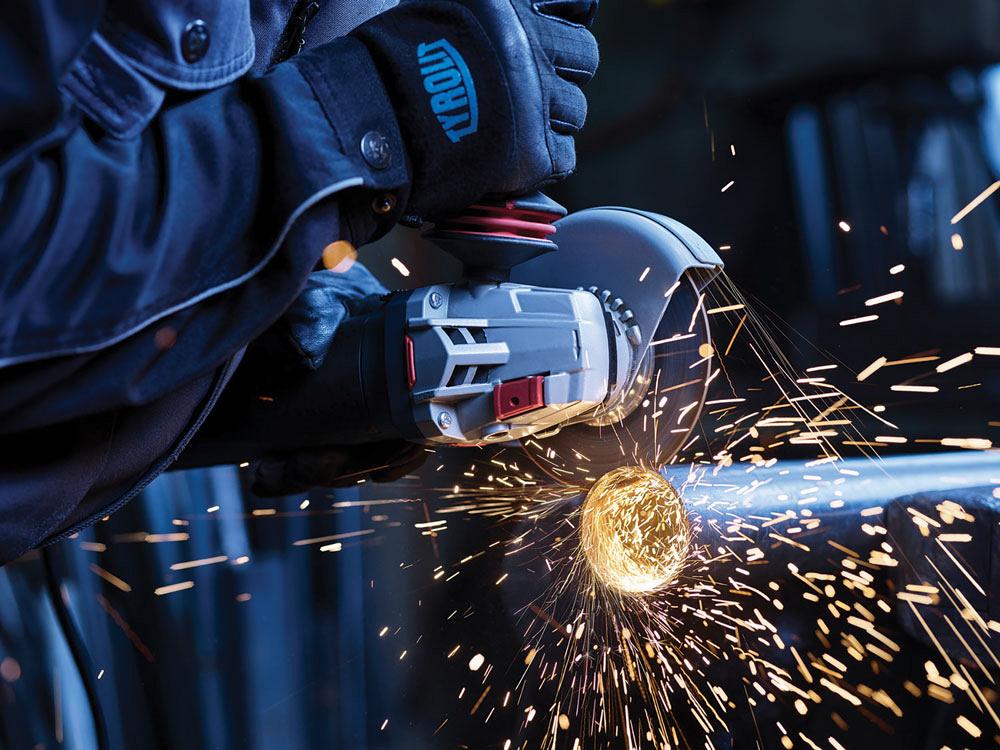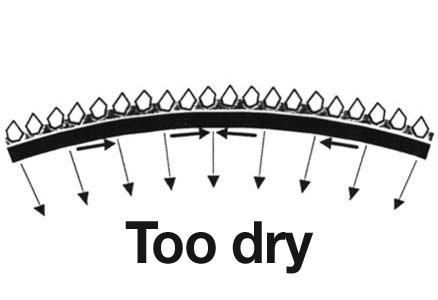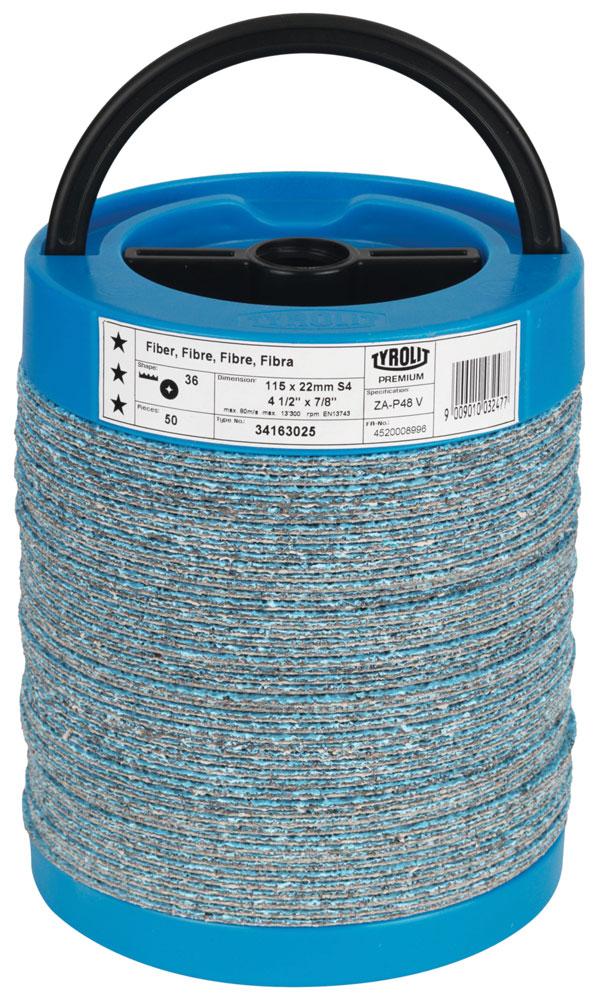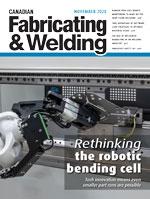National Sales Director
- FMA
- The Fabricator
- FABTECH
- Canadian Metalworking
Abrasives safety 101
Follow best practices and safety guidelines when using hand tools
- By Jim Coulson
- November 27, 2020
- Article
- Welding
Abrasives are an essential part of a fabricating shop’s daily operations. As with any tool, numerous best practices must be followed to ensure you get the best results from the product. Even more important, following proper safety guidelines ensures the safety of the operator and those working in that operator’s vicinity.
Because of the forces involved in the operation of grinding and cutting tools, abrasives undergo great stress when being used; it is important that careful attention is given to and preparations made before the tool is put to use.
Considerations include verifying that the abrasives have been stored properly and are in good working order. Furthermore, make sure that you have chosen the correct tool and abrasive for the job, and always use the appropriate PPE and safety guards to avoid injury.
When you are choosing an abrasive, look for a reputable company that is a member of the Organization for the Safety of Abrasives (oSa). Manufacturers that are members print the oSa symbol on their products; it is a symbol of quality and an indication that the manufacture of these products meets stringent safety standards.
Remember, a portable grinding or cutting wheel may have a working speed of 80 m/sec. or 288 km/hour So you can imagine the potential danger a faulty or poorly manufactured wheel could pose. Most reputable abrasives manufacturers have local representation that can and are pleased to provide training on the safe use of their products. Don’t hesitate to use them as a resource. It is important that the operators using the tools are properly trained. Many times manufacturer training is a free benefit. The oSa website, www.osa-abrasives.org, is also a great resource. When it comes to safety, the grinding tool manufacturer, the grinding machine manufacturer, and the user all have their roles to play.
Storage and Condition
Abrasives are subject to changes related to humidity and temperature. Ideally, these products should be stored in a cool, dry location before use. If you use resin-bonded wheels, store them in their original packaging, avoid extreme temperatures, inspect them for damage before use, and then handle and mount them with care. Inspect the grinder or power tool to ensure that it is in good working order and that mounting nuts and flanges are a correct match for the tool and are not worn out.
All bonded abrasives degrade over time, and as a result, many bonded abrasive manufacturers list on their products an expiry (best before) date of three years past the date of manufacture. Be sure to rotate your stock to ensure you are getting the most out of your abrasives.
All coated abrasives are subject to changes from environmental conditions. Although they do not typically have an expiration date, if they are subjected to very dry or very humid conditions, they tend to curl and, in some cases, can curl to a point where the abrasive coating cracks and they are not usable. By storing products in their original packaging and in areas where humidity is not a factor, you can reduce this issue. Some manufacturers package their discs in reusable “screw-down” canisters to ensure that the discs remain flat before use.
No matter what type of abrasive you are using for the job, always inspect the tool for signs of damage before use. Look for chips, cracks, damage to the inner ring, and deformation of the tool. Remember, these tools are running at very high RPMs and can become dangerous projectiles very quickly.
Choosing the Correct Tool
It is extremely important that trained operators use the appropriate tool and abrasive for the job. Whether it’s grinding, cutting, or finishing, there is always a proper way of doing things. One of the most common mistakes is using a cutting disc for some minor grinding or deburring application. This is a definite safety concern as cutting wheels are not manufactured to perform this job. Bonded cutting wheels are made to be used on a 90-degree cutting angle and are not reinforced to be side-loaded like a grinding wheel would be. The added stresses of using a cutoff wheel to grind can damage the wheel and result in a serious injury to the operator.
If a combined cutting and grinding operation is needed, be sure to use a product that is clearly labelled as a cut and grind product.
Another common mistake is using abrasives that are manufactured for steel only on stainless steel. While these products in some cases may do the job, the abrasives could contain additives or fillers that react with stainless steel, leading to premature corrosion or contamination of the surface.
There are other abrasives designed to work well on both mild steel and stainless for shops that process a variety of materials. However, be careful not to use a wheel that was previously used on a steel application on a subsequent stainless steel job. The grinding or cutting wheel will carry fine particles from the steel onto the stainless surface, potentially leading to problems with the workpiece, corroding or reacting with the stainless steel, affecting the finish of the material.
Some products specially designed for non-ferrous material such as aluminum are meant to work these softer metals without clogging or damaging the surface of the substrate. Most reputable companies clearly mark their products or packaging with icons and symbols indicating their intended use. Take the time to review them before use.
In addition to choosing the appropriate abrasive for the job, it is just as important to match the abrasive with the appropriate power tool. Each abrasive has a maximum operating speed measured in either RPMs or meters/sec. Take the time to ensure that you adhere to these guidelines.
While there are safety factors inherent in ANSI and OSHA regulations, they may not account for an abrasive being used on an incorrect tool. For instance, a common question is whether a worn-down 7-in. grinding wheel can be used on a 5-in. grinder. While it may fit, the 7-in. wheel was manufactured to a maximum rating of 8,600 RPM; a typical 5-in. grinder runs at approximately 10,000 RPM. Exceeding the recommended speed for an abrasive is not worth the risk. Use 5-in. wheels with 5-in. grinders; use 7-in. wheels with 7-in. grinders.
Proper PPE and Safety Precautions
The oSa has a comprehensive list of Dos and Don’ts on its website, here are some of the highlights of that list that should never be ignored when working with abrasives to ensure the operator’s safety:
- Always wear eye protection when working with abrasives. Sparks, dust, and debris can permanently damage the only eyes you have. Take care at all times and never compromise.
- You are working in proximity to abrasives running at hundreds of kilometers per hour. The sparks you see are hot metal shards and can be 1,000 degrees C. Even with proper guards on the tool, dust and heat can damage your hands. Wear protective gloves.
- Always wear hearing protection, as noise levels can exceed 100 dB when grinding and cutting. Hearing loss can take years to become evident, so protect your hearing now.
- Ensure good ventilation through the use of air extraction devices, and wear dust masks at all times.
- Fire-retardant clothing (aprons, vests, work wear, and gloves) always should be worn when working around hot sparks.
A very common shortcut is to remove guards when cutting or grinding because they are viewed as cumbersome or restrict some manipulation of the tool. This is a very dangerous practice that leads to serious workplace injuries. Consider the guard as one of the main lines of defence between you and the tool. If a wheel is damaged or faulty, it can become a dangerous projectile quickly, and without warning. Always use the guards; they are designed for your protection. If you think it’s necessary to take a guard off to finish the job, consider using another tool that can get the job done safely.
Safety begins with the operator but takes manufacturers and suppliers to all use common sense and guidelines to ensure greater productivity and a safe workplace. Your quality abrasive manufacturer and the oSa are great resources; don’t hesitate to use their expertise to make your work environment productive and safe.
Jim Coulson is national sales director, Canada, for Tyrolit Industrial Abrasives, 6165 Kennedy Road, Mississauga, Ont. L5T 2S8, 905-565-9880, ext. 522, jim.coulson@tyrolit.com, www.tyrolit.ca.
About the Author
subscribe now


Keep up to date with the latest news, events, and technology for all things metal from our pair of monthly magazines written specifically for Canadian manufacturers!
Start Your Free Subscription- Trending Articles
Aluminum MIG welding wire upgraded with a proprietary and patented surface treatment technology

Achieving success with mechanized plasma cutting

Hypertherm Associates partners with Rapyuta Robotics

Gema welcomes controller

Brushless copper tubing cutter adjusts to ODs up to 2-1/8 in.

- Industry Events
MME Winnipeg
- April 30, 2024
- Winnipeg, ON Canada
CTMA Economic Uncertainty: Helping You Navigate Windsor Seminar
- April 30, 2024
- Windsor, ON Canada
CTMA Economic Uncertainty: Helping You Navigate Kitchener Seminar
- May 2, 2024
- Kitchener, ON Canada
Automate 2024
- May 6 - 9, 2024
- Chicago, IL
ANCA Open House
- May 7 - 8, 2024
- Wixom, MI



















